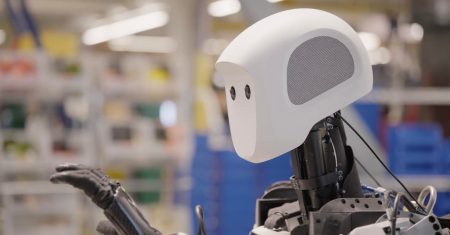Dr. Satyandra K. Gupta: Co-Founder, Chief Scientist, GrayMatter Robotics; Smith Int’l Professor & Dir. CAM USC; Fellow ASME, IEEE, SME, SMA.
In today’s complex and competitive business landscape, manufacturing companies face mounting challenges such as product complexity, high-performance expectations, accountability demands, intense global competition and the need for traceability. Customers now demand flawless quality, while regulators hold manufacturers responsible for delivering on promised performance and maintaining traceability. In this environment, earning and maintaining customer trust is crucial for the survival of any manufacturer.
The Costly Impact Of Manufacturing Quality Issues
A significant risk of breaching trust is the occurrence of product recalls resulting from manufacturing quality issues. We have witnessed numerous instances in recent years where manufacturers failed to meet safety or performance standards, leading to widespread recalls across various industries such as automotive, food, medicine and consumer electronics. These recalls not only incur substantial costs in terms of lost sales, replacement expenses, government penalties and legal action, but they also damage a manufacturer’s reputation and erode profits.
To thrive in today’s climate, manufacturers must deliver trustworthy products that meet customer expectations, as failure to do so can result in irreparable damage to their reputation and significant revenue loss. Preventing the occurrence of product recalls involves taking several key steps:
• Ensuring the authenticity and quality of incoming raw materials to guarantee that the right materials are used during the manufacturing process.
• Confirming that the correct processing conditions and operating procedures are followed to produce parts.
• Certifying that the manufactured parts meet the specified requirements.
Traditionally, manual manufacturing operations necessitate implementing sophisticated quality management systems, often requiring additional hardware installations for part inspection and process data collection. Despite the added expenses involved, this investment is necessary to mitigate the risk of product recalls.
Leveraging Robotics To Prevent Product Recalls
However, AI-powered robot cells offer an innovative solution that can alleviate the burden and enable quality control more cost-effectively. While these robotic cells are primarily deployed to address labor shortages in the manufacturing sector, they also provide a significant advantage by collecting critical information to ensure manufacturing quality without incurring additional costs. Here are a few examples of how robotic cells contribute to delivering trustworthy products and reducing the likelihood of product recalls:
• Recording Relevant Processing Data: Robotic cells can record important information during operations such as sanding, including applied force, RPM, tool velocities and tool specifications. This data creates a detailed, auditable trace to verify that parts were processed under the correct conditions.
• Implementing Inspection Steps: Robotic cells often include inspection processes to ensure the successful completion of part processing. The collected data can be used to generate a digital certificate confirming compliance with specifications. Moreover, this data can help automate downstream processing steps efficiently.
• Monitoring Raw Material Quality: When robots commence work on a part, an initial measurement step is performed on the raw material loaded into the cell. For instance, in the case of sanding, optical scanning creates a model for generating tool trajectories. The robotic cell can monitor tool wear and part behavior throughout the processing. If any anomalies are detected, the system can infer the quality of incoming materials and notify the upstream process team.
The Threat Of Counterfeit Parts: A Challenge For Manufacturers
Counterfeit parts pose a significant challenge in the manufacturing industry today, with far-reaching consequences. The U.S. Department of Defense supply chain, for instance, faces a grave risk to national security as counterfeit components compromise critical military operations and put the lives of service members at stake. A prominent case in point is Toyota’s 2018 global recall of over 1 million vehicles, triggered by potentially faulty airbag inflators containing counterfeit parts. These counterfeit inflators failed to deploy airbags properly, increasing the risk of injuries in accidents.
The dangers associated with counterfeit parts extend beyond safety concerns. Malfunctions, accidents, injuries and even fatalities can result from using these substandard components. Financial losses due to product recalls, warranty claims, legal expenses and damage control efforts can be substantial. Moreover, sales may decline, and long-term customer trust may be compromised, negatively impacting overall revenue. According to the USPTO, the estimated global value of counterfeit and pirated items falls within the staggering range of $2.5 trillion to $4.7 trillion.
Defeating counterfeit parts requires robust measures to enable easy detection at the customer site. Once again, robots can emerge as key players in this arena. By applying invisible markings or watermarks on parts, robots can facilitate the identification of counterfeit components when they reach the customer site.
Ensuring Cybersecurity In Automation Deployment
Industrial robots face the risk of cyberattacks and data breaches. By deploying appropriate cybersecurity measures, manufacturers can uphold the integrity of their operations, ward off potential threats, and ensure the production of trustworthy products.
It is crucial to implement end-to-end encryption, which safeguards against attacks and guarantees secure data exchange between robots and other devices. Regular updates of the robot’s software are essential to address security vulnerabilities and leverage the latest security features.
Whenever possible, robots should employ isolated networks to hinder unauthorized access and potential hacking through unsecured networks. It is vital to incorporate multifactor user authentication and proper authorization to thwart unauthorized entry and minimize the likelihood of cyberattacks. To enhance security against malware and viruses, sensitive data should be identified and protected through data segmentation and access control.
Finally, advanced measurement capabilities provided by sensors can be utilized to detect unusual processing conditions and identify unauthorized access attempts, thereby enhancing robot cell security.
Recent advancements in blockchain technologies also offer an additional layer of security, ensuring the tamper-proof nature of data recorded by robot cells. This enables parties involved in auditing the data to place their trust in its integrity.
In summary, the combination of robotic cells and robust cybersecurity measures holds immense potential for delivering trustworthy products in the manufacturing industry. These advanced systems can collect valuable data, facilitate inspection and certification processes, aid in detecting counterfeit parts, monitor anomalies and leverage blockchain technology to ensure data integrity. By implementing these strategies, manufacturers can establish world-class manufacturing systems that produce high-quality parts in a cost-competitive manner.
Forbes Technology Council is an invitation-only community for world-class CIOs, CTOs and technology executives. Do I qualify?
Read the full article here










